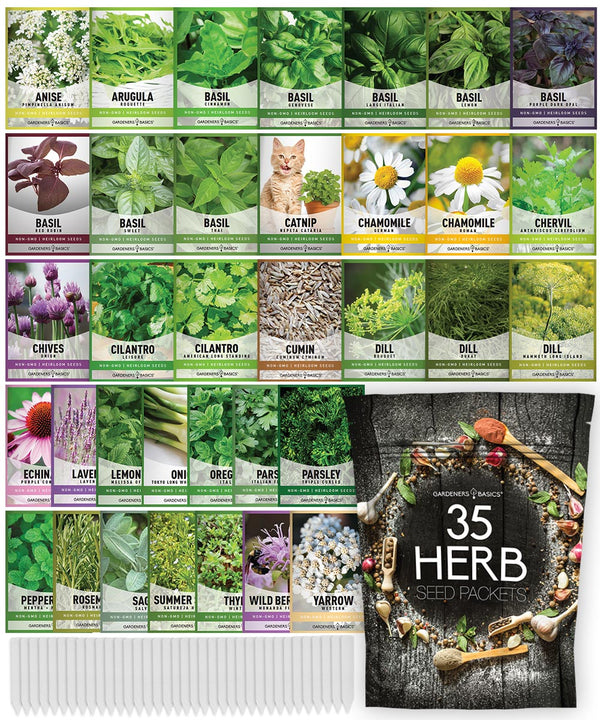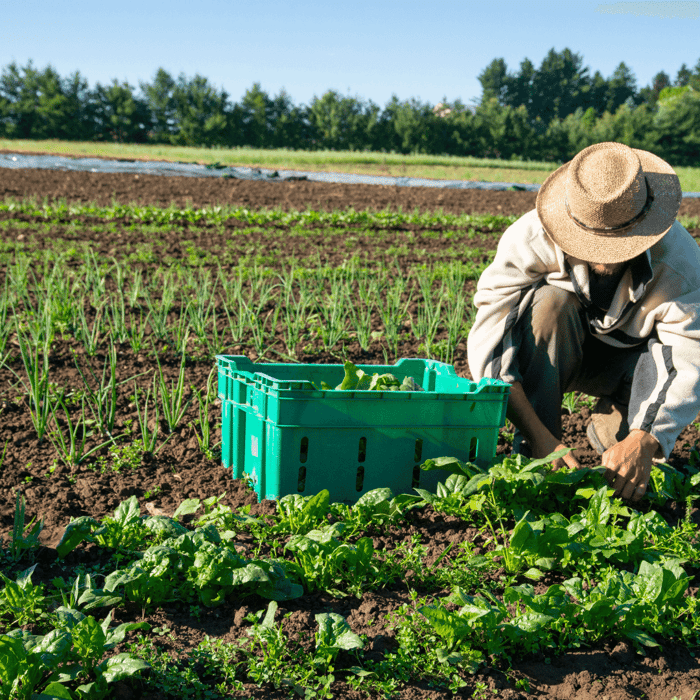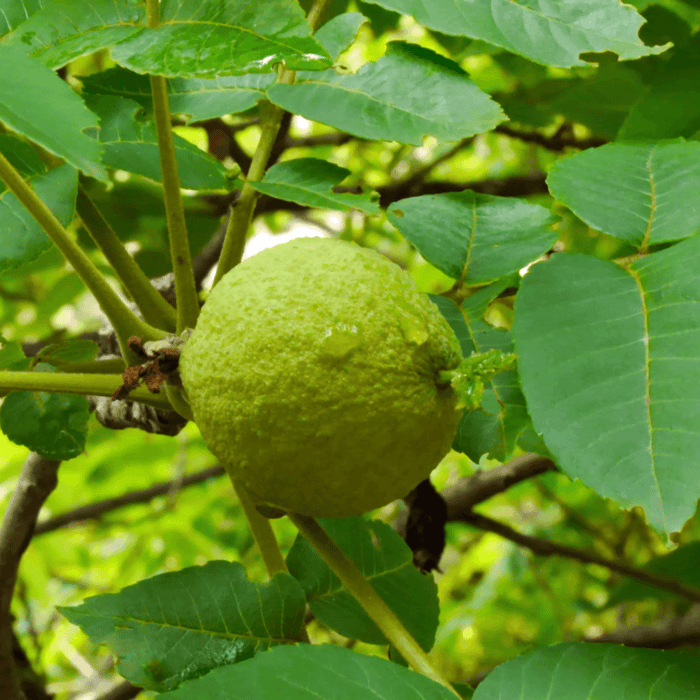As an experienced gardener and a firm believer in the power of companion planting, I often find myself discussing its benefits with fellow gardeners. Companion planting is an age-old practice that involves growing different plants together for mutual benefit. It can be used to improve soil health, repel pests, and enhance the overall productivity of your garden. In this in-depth article, we'll explore the ins and outs of companion planting and how to make it work for you. We'll cover various topics, including trap cropping, heirloom seeds, and planting multiple plants. Let's talk about how does companion planting work!
1. The Science Behind Companion Planting
Recent studies have shown that companion planting can benefit your garden. One study demonstrated that certain plants can attract beneficial insects, such as ladybugs and lacewings, which feed on aphids and other pests. Companion planting practices can also help plants with deep roots access nutrients and water, while shallow-rooted plants can take advantage of nitrogen from the air. Furthermore, research has revealed that some plant combinations can enhance the flavors and nutritional content of the crops, leading to tastier and more nutritious produce.
Popular Herb Seeds for Planting | 35 Variety Pack

$29.95
$49.95
Heirloom, non-GMO herb seeds for indoor and outdoor home gardens! Introducing our 35 Herb Seeds Variety Pack, the ultimate selection for any herb garden enthusiast! This premium assortment includes heirloom herb seeds that are non-hybrid, open-pollinated, and non-GMO, ensuring you get only… read more
2. Trap Cropping: Using Plants as Bait
Trap cropping is a clever technique that involves planting a specific crop to attract pests away from your main plants. By luring pests to the trap crop, you can significantly reduce the damage they cause to your valuable crops. For example, planting African marigolds near tomatoes can help divert whiteflies, while planting French marigolds near cabbages can deter cabbage moths. In addition to reducing pest populations, trap cropping can serve as a habitat for beneficial insects, providing a natural form of pest control.
3. Heirloom Seeds and Plants: Preserving Genetic Diversity
Using heirloom seeds and plants in your garden is an excellent way to promote genetic diversity and maintain the unique characteristics of these varieties. Heirloom plants often have a built-in resistance to pests and diseases, making them ideal candidates for companion planting. By incorporating a wide variety of heirloom plants into your garden, you can create a healthier, more resilient ecosystem. Furthermore, heirloom varieties often produce more flavorful and nutritious fruits and vegetables, allowing you to enjoy the full benefits of your gardening efforts.
4. Sweet Alyssum: A Beneficial Insect Magnet
Sweet alyssum is a popular companion plant known for its ability to attract beneficial insects. Its tiny, fragrant flowers are irresistible to insects such as hoverflies, which feed on aphids, and parasitic wasps, which prey on caterpillars. Planting sweet alyssum alongside crops like cabbage and lettuce can help protect them from pests while also adding beauty to your garden. Additionally, sweet alyssum can serve as a ground cover, helping to suppress weeds and maintain soil moisture.
5. Plant Diversity: The Key to a Healthy Garden
A diverse garden is a healthy garden. Planting various plants helps create a balanced ecosystem that can withstand pest infestations and disease outbreaks. Additionally, diverse planting arrangements can improve soil health by promoting the growth of beneficial microorganisms and improving nutrient cycling. By incorporating a wide range of plant species, you can also create a visually attractive garden that supports pollinators and other beneficial wildlife, contributing to the overall health of your local ecosystem.
6. The Role of Deep Roots in Companion Planting
Some plants have deep roots that can access water and nutrients from deeper soil layers. Deep-rooted plants can help improve soil health by bringing these essential nutrients closer to the surface when planted alongside shallow-rooted plants. In return, shallow-rooted plants can fix nitrogen from the air, making it available to their deep-rooted neighbors. Furthermore, deep-rooted plants can help prevent soil compaction and erosion, ensuring your garden remains healthy and fertile for years.
7. Cover Crops: Soil Protectors and Nutrient Providers
Cover crops are crucial in companion planting by protecting the soil, suppressing weeds, and providing nutrients for other plants. They can also help prevent soil erosion and improve water infiltration. Examples of effective cover crops include clover, vetch, and field peas. These plants can be grown alongside your main crops or sown in the off-season to prepare the soil for the next planting. Besides their soil-enhancing properties, cover crops can also provide additional benefits, such as attracting beneficial insects and serving as a habitat for local wildlife.
8. Making Companion Planting Work for You
To make companion planting work for you, observe your garden's ecosystem and identify potential issues, such as pest infestations or poor soil health. Next, research suitable companion plants to address these issues and complement your crops. Here are some tips to help you get started:
- Select plants with similar growing requirements, such as sunlight, water, and soil type, to ensure they can thrive together.
- Experiment with different plant combinations and observe their effects on your garden's health and productivity.
- Rotate your crops to prevent soil depletion and the build-up of pests and diseases.
- Use heirloom seeds and plants to preserve genetic diversity and enhance the resilience of your garden.
- Incorporate various plants, including flowering species like sweet alyssum, to attract beneficial insects.
- Utilize deep-rooted plants to improve nutrient cycling and make the most of your garden's soil profile.
- Consider planting cover crops to protect the soil, suppress weeds, and provide additional nutrients for your main crops.
It's essential to be patient and flexible when implementing companion planting strategies. Your garden's unique conditions may require trial and error to find the best plant combinations. By carefully monitoring your garden and adjusting your planting strategies as needed, you can create a thriving, balanced ecosystem that supports the health and productivity of your plants.
In conclusion, companion planting is a powerful and time-tested gardening technique that can significantly benefit your garden's health and productivity. By carefully selecting and combining plants, you can create a balanced and thriving ecosystem more resistant to pests, diseases, and other challenges. Embrace the power of companion planting, and watch your garden flourish like never before.
Vegetable Seed Vault Kit | 35 Variety Pack

$29.95
$49.95
Ultimate Survival Seed Vault: 16,000+ Non-GMO Heirloom Vegetable Seeds for Emergency Preparedness Introducing the Seed Vault Kit, your all-in-one solution for emergency preparedness and sustainable gardening. This premium seed kit contains over 16,000 non-GMO, Heirloom, Non-Hybrid, and Open Pollinated seeds,… read more
 Frequently Asked Questions about Companion Planting
Frequently Asked Questions about Companion Planting
Here are some frequently asked questions about companion planting to help you better understand this gardening technique.
Q1: Can companion planting be used in small gardens or container gardens?
A: Absolutely! Companion planting is suitable for all sizes, including small and container gardens. Choose plants with similar growing requirements and pair them in containers or small spaces to enjoy the benefits of companion planting.
Q2: How do I choose the right companion plants for my garden?
A: Start by researching your main crops' specific needs and characteristics. Then, look for plants that can address any challenges, such as pest infestations or poor soil health. Experiment with combinations and observe the effects on your garden's health and productivity.
Q3: Can companion planting help with pest control?
A: Yes, companion planting can be an effective method for natural pest control. Certain plants can repel pests, while others can attract beneficial insects that prey on pests. Additionally, trap cropping can be used to lure pests away from your main crops.
Q4: What are some examples of successful companion planting combinations?
A: Some well-known companion planting combinations include:
- Tomatoes and basil: Basil is believed to enhance the flavor of tomatoes and may help repel pests.
- Corn, beans, and squash: Known as the "Three Sisters," this combination offers mutual support, with beans fixing nitrogen for corn and squash providing ground cover to suppress weeds.
- Cabbage and nasturtiums: Nasturtiums can help repel cabbage pests like cabbage moths and aphids.
Q5: Can companion planting improve soil health?
A: Yes, companion planting can contribute to improved soil health. Deep-rooted plants can bring nutrients to the surface, while shallow-rooted plants can fix nitrogen from the air. Additionally, cover crops can protect the soil, suppress weeds, and provide nutrients for other plants.







